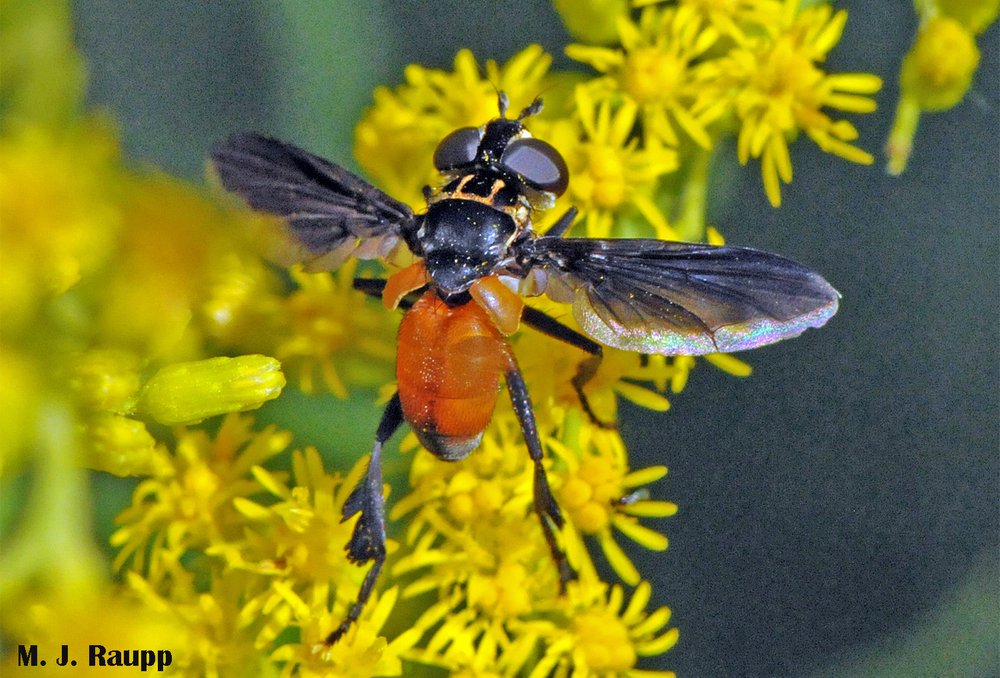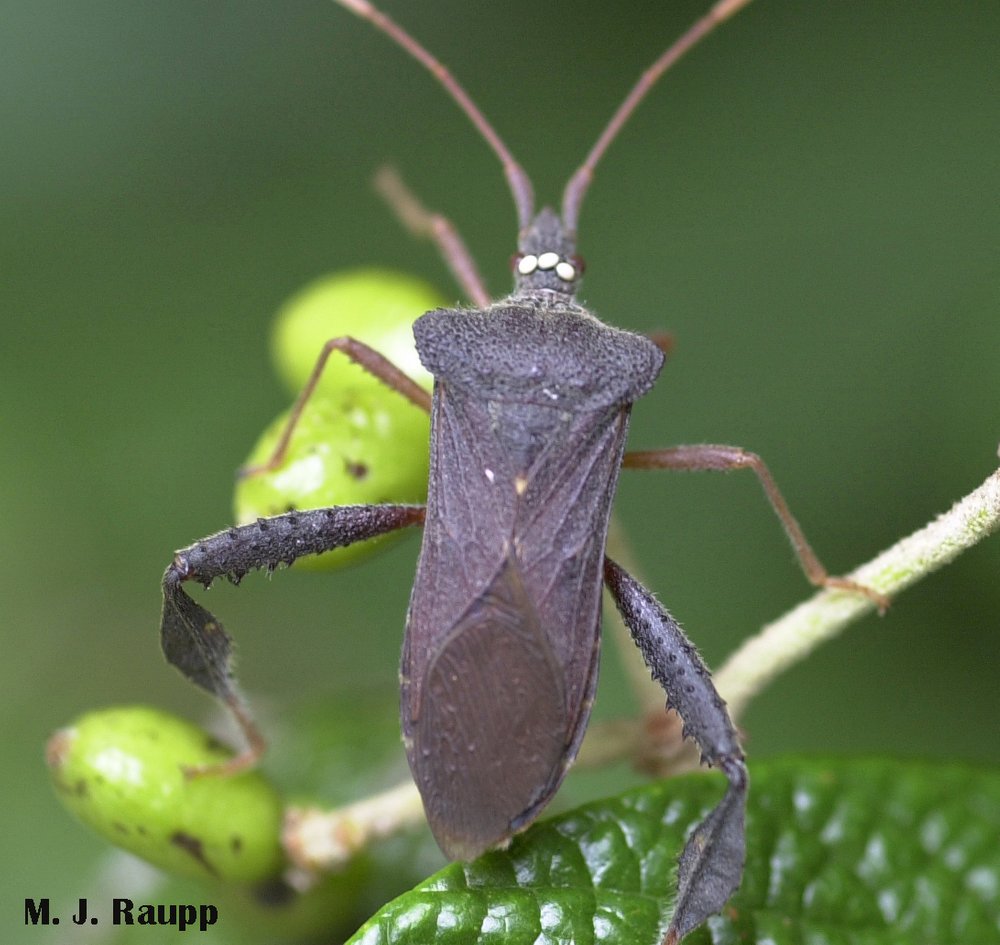Bugs better beware of feisty feather-legged flies, Trichopoda pennipes

Notice the feather-like hairs on the hind legs of the feather-legged fly, a native ally in the fight against brown marmorated stink bug.
Autumn is a perilous time for many beneficial insects as they strive to collect food reserves to help them survive the approaching winter. In last week’s episode we watched honeybees taking advantage of an unusual source of food, honeydew produced by spotted lanternflies. Premier late season nectar sources for honeybees and many other beneficial insects are native goldenrods, brilliant members of the aster family widely distributed in North America. Rich in nectar and pollen, they help sustain many bees, wasps, and beetles preparing for winter. A few weeks ago, while visiting a favorite patch of goldenrod, I happened across a couple of very cute flies sporting orange and black bodies and feathery hind legs. These belong to a clan of parasitic flies known as tachinids. Some tachinids attack caterpillars, including the nefarious gypsy moth caterpillar, but feather-legged flies have a penchant for members of the “true bug” clan, insects with sucking mouthparts and immature stages called nymphs. Included in this clan are some very bad performers including the brown marmorated stink bug.
Goldenrods are super attractors for many beneficial insects, including feather-legged flies. Flies deposit eggs on many true bugs, like this hapless native leaffooted bug. Eggs hatch and fly larvae bore into the host to develop. With development complete they exit, drop to the ground and pupate in the soil. Adults emerge from the soil to feed, mate, and find new bugs to parasitize. They are known to attack invasive pests, including the nefarious brown marmorated stink bug.

Uh oh, with three tachinid eggs stuck just behind its head, this leaffooted bug is doomed.
As with many other tachinids, female Tricopoda flies seek hosts on which to deposit their eggs. Stink bugs, squash bugs, leaffooted bugs, and other true bugs are on the hit list. Upon hatching from the egg, tiny fly larvae drill their way through their egg shell and then through the outer skin of their buggy host. Inside their host they develop on the bug’s nutrient rich tissues. Once larval development is complete, maggots bore their way out of the host and drop to the soil below. A pupa forms within the skin of the final stage of the maggot and from this puparium the adult fly emerges ready to find food and a mate. As you might guess, hosts usually succumb to this parasitic invasion.
But how do these smallish flies find their hosts? Insects communicate in a variety of ways using sight, sound, and volatile chemicals to find and join other members of their species. Chemicals used for communication by members of the same species are called pheromones. In a series of fascinating studies, Jeff Aldrich and his colleagues discovered how these parasitic flies locate their victims. Many species of true bugs produce pheromones that serve as assembly calls for purposes of mating or defense. Tachinids use these aggregation pheromones for their own mischievous purpose, to find hosts that will serve as food for their parasitic offspring. While this tale may seem a little dark, the good news here is that native Trichopoda flies have joined other allies, including wheel bugs, garden spiders, robber flies, mantises, and wasps to stymie the shenanigans of invasive pests including the brown marmorated stink bug.
Acknowledgements
The intriguing references “The biology of Trichopoda pennipes Fab. (Diptera, Tachinidae), a parasite of the common squash bug by Harlan Worthley, “Bug pheromones (Hemiptera, Heteroptera) and tachinid fly host-finding” by Jeff Aldrich, Ashot Khrimian, Aijun Zhang, and Peter Sherer, and “Parasitism of the Invasive Brown Marmorated Stink Bug, Halyomorpha halys (Hemiptera: Pentatomidae), by the Native Parasitoid, Trichopoda pennipes (Diptera: Tachinidae)” by Neelendra K. Joshi, Timothy W. Leslie, and David J. Biddinger were used to prepare this episode.
This post appeared first on Bug of the Week